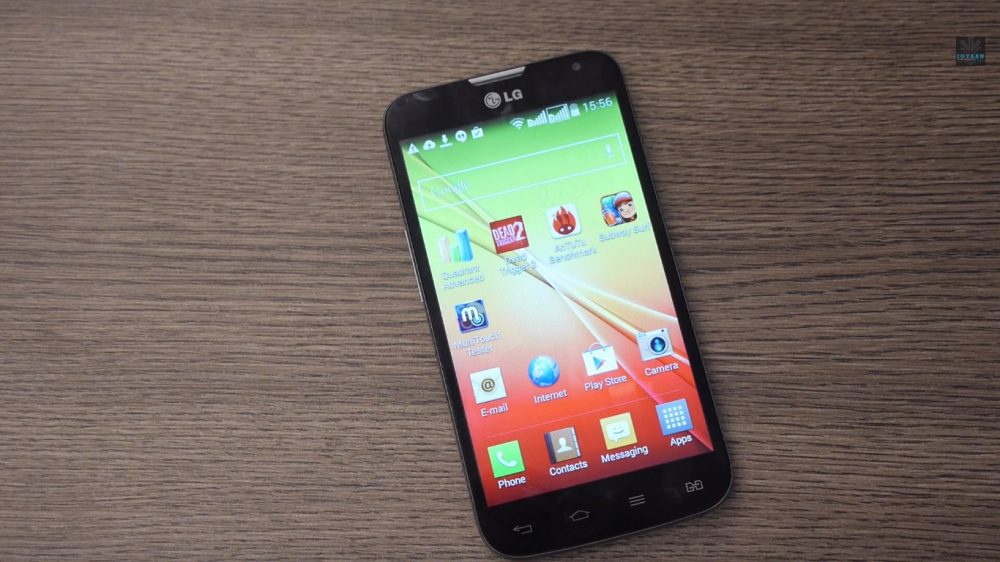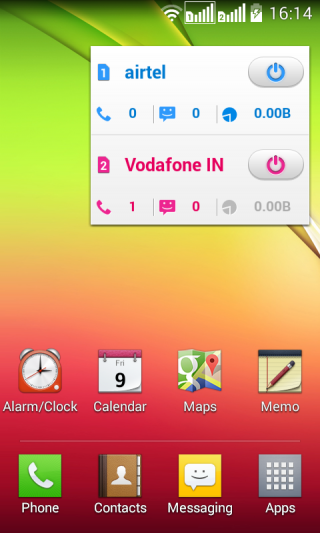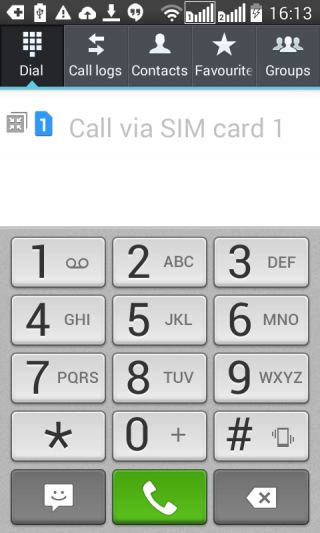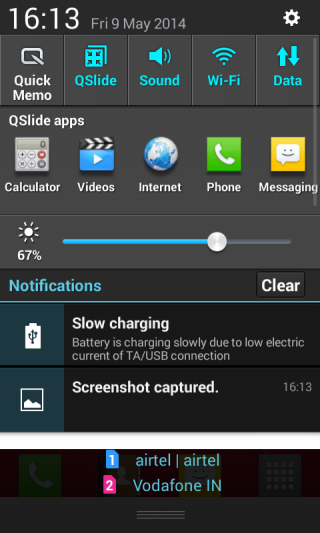LG L70 Review : Can it beat the Moto G?

Even though the Android 4.4 Kitkat was released in September last year and praised unanimously, companies have been rather slow in incorporating the advanced OS on their phones. There is an even bigger shortage in the budget phones category, where the 4.2.X Jellybean still rules the game. Moto G created a revolution by bringing a feature packed device into the budget market, giving its competition a run for their money.
LG L70 is LG’s answer to the one of a kind Moto G. The phone is in the same price bracket as the Moto G, but the specs create all the difference between these two machines. So we put the L70 to test to see how it fares against the high standards set by Moto G.
Design and Display
The overall design is fairly generic and seems like this aspect of the phone wasn’t given too much importance. The perforated back panel is extremely slippery and it is advisable to get a protective case.
To open the back panel one needs to press down on the micro USB slot. It has a two layered SIM card slots, which are fairly easy to insert the cards in, but a tad bit hard to pull out. The phone adds an addition to the usual fare of three capacitive buttons in the form of a dedicated SIM swapping button. It can easily cause a bit of confusion initially but you can get used to it.
The display is a 4.5 inch, 480X800 pixel screen with a 207ppi density. It is a Corning Gorilla glass 2 screen with 5 point multi-touch. The screen is a downer in comparison to stunning 720p screen of the Moto G.
Hardware
The phone comes with a Qualcomm MSM8210 Snapdragon 200 chipset and a Dual-core 1.2 GHz Cortex-A7 CPU. The internal memory is 4GB which is expandable to 32GB. The CPU tends to get over burdened by large apps.
Operating System
The device comes with LG’s customized version Kitkat 4.4 right out of the box. It is of course one of the Android OS. The browser on the device was fairly laggy and didn’t give a good browsing experience. In the drop down menu, LG has added an option called Qslide which gives access to all the necessary utilities from the menu itself. Though it lets you customize the apps through Qslide, but you can’t add your own apps onto the menu.
According to LG, the Knock code is the USP of the device which is basically one of the hundreds of unlock gimmicks being employed by several companies to differentiate themselves in the market. LG has also added some bloatwares which slow the handset down. The dialer of the phone needs to be commended for the most realistic design. For people who enjoy and miss the feel of pressing physical buttons, this is the closest it comes to that experience.
The Quick Memo option is kind of like the S-note on Samsung devices, but for a fraction of the price it gives good handwriting recognition even when written with the finger. Also, fairly simple to get used to.
Camera
The camera on the L70 is a 5 megapixel autofocus with LED flash. The main camera is capable of good color reproduction, in daylight as well as indoor light. The flash is capable of maintaining details even at close quarters, so it would be great for some Saturday night party shot.
For a selfie obsessed person, the front VGA cameras would be a bit of a disappointment, but it is still better than other budget phones. The L70 has 9 focus points and gives a good autofocus results. Although, the moving subjects tend to get blurry.
Conclusion
The phone is a not at all a competitive effort on the part of LG against the rule of Moto G. The design of the device is dated and doesn’t inspire you to flaunt the device. The UI is capable of great things, but the hardware seems to be a roadblock. Maybe LG will get back on the design board and give the customers a more comprehensive device without the flaws of the present device.
So to answer the question, Moto G is still the king of Rs10,000 to 15,000 price band.



























 . Thou
. Thou
 ! For i
! For i